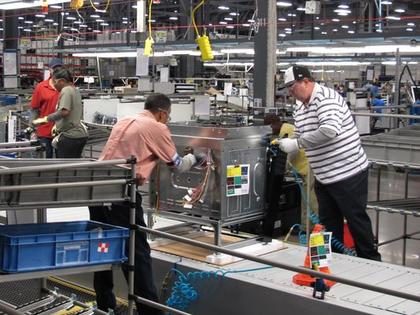In the world of manufacturing, quality assurance is a fundamental aspect of ensuring that products meet the highest standards of excellence. Manufacturers invest significant time and resources in inspecting, testing, and fine-tuning their products to deliver superior outcomes. However, an equally critical aspect that demands equal attention is workplace safety. In this blog post, we will explore how manufacturers can improve workplace safety by applying the same meticulous approach they use for quality assurance. By prioritizing safety in the same way they prioritize product quality, manufacturers can create a safer and more productive work environment.
Understanding the Parallels between Quality Assurance and Workplace Safety
Quality assurance and workplace safety share striking similarities in terms of their underlying principles. Both focus on identifying potential risks, implementing preventive measures, and continuously monitoring processes to ensure consistent performance. By recognizing these parallels, manufacturers can leverage their expertise in quality assurance to enhance workplace safety effectively.
1. Risk Assessment and Hazard Identification
Just as manufacturers identify potential defects and risks during the quality assurance process, they must conduct thorough risk assessments in the workplace. This involves identifying hazards, evaluating their potential impact on workers, and prioritizing the most critical areas for improvement.
2. Preventive Measures and Protocols
In quality assurance, manufacturers establish standardized procedures to prevent defects and maintain consistency. Similarly, in workplace safety, manufacturers should develop comprehensive safety protocols and standard operating procedures (SOPs) to prevent accidents and injuries. These protocols should cover everything from equipment operation to emergency response plans.
3. Training and Competence
Manufacturers invest in training their workforce to ensure their teams possess the necessary skills and competence to produce high-quality goods. Similarly, for workplace safety, comprehensive training programs should be provided to employees, making them aware of potential hazards and best safety practices. Training should be ongoing and integrated into the onboarding process for new employees.
4. Continuous Monitoring and Improvement
In quality assurance, manufacturers conduct regular inspections and audits to monitor the production process and identify areas for improvement. Likewise, manufacturers should implement a system of regular worksite inspections and safety audits to assess compliance with safety protocols and identify new risks that may emerge over time.
5. Employee Engagement and Feedback
Manufacturers understand the value of employee feedback in improving product quality. The same principle applies to workplace safety, where employees should be encouraged to report safety concerns, near-miss incidents, and suggestions for improvement. Their feedback can lead to valuable insights that drive continuous safety enhancements.
6. Safety Culture and Leadership Commitment
To ensure quality in their products, manufacturers foster a culture of excellence and set high standards. Similarly, building a strong safety culture is crucial to enhancing workplace safety. Management should lead by example, demonstrating a commitment to safety and encouraging employees to prioritize it in all aspects of their work.
Conclusion
Manufacturers have long recognized the significance of quality assurance in producing top-notch products. By applying the same meticulous approach to workplace safety, they can create a safer and more secure working environment for their employees. Just as they invest in continuous improvement to deliver exceptional products, manufacturers should invest in the ongoing enhancement of workplace safety. The benefits of prioritizing safety are manifold, including a reduction in workplace accidents, increased employee morale and productivity, and compliance with regulatory requirements. By integrating quality assurance principles into their safety practices, manufacturers can pave the way for a successful, accident-free workplace, and demonstrate their dedication to both their products and the well-being of their employees.











